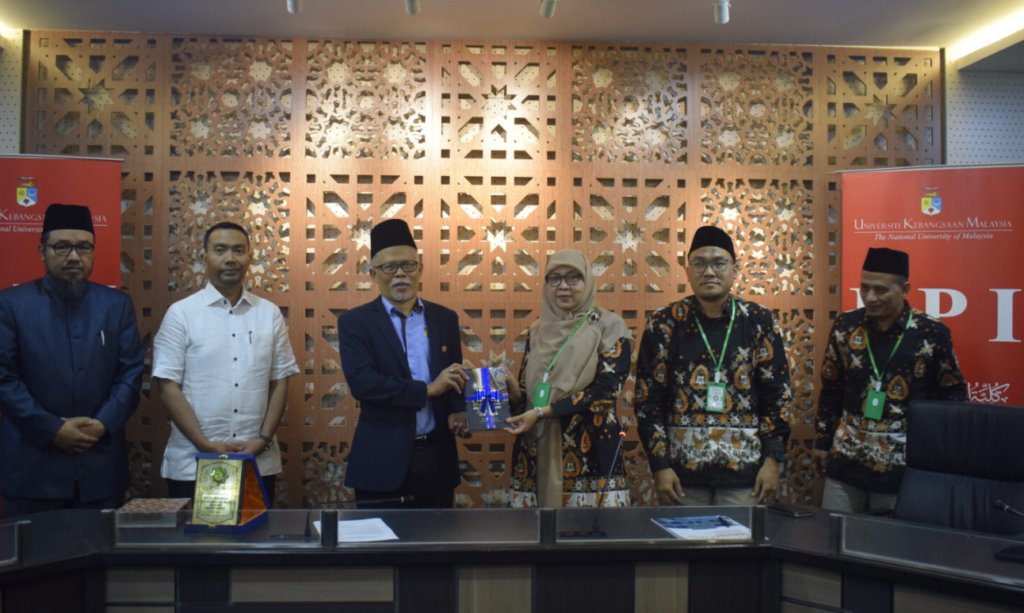Alamat
Jalan Jendral Ahmad Yani No.10, Jambean, Sukorejo, Kec. Bojonegoro, Kabupaten Bojonegoro, Jawa Timur 62115
Alamat
Jalan Jendral Ahmad Yani No.10, Jambean, Sukorejo, Kec. Bojonegoro, Kabupaten Bojonegoro, Jawa Timur 62115
RESULT RESEARCH

A Comparative Study of Islamic Education in Malaysia and Indonesia
Ahmad Sunawari Long1, Hamam Burhanuddin2
Universitas Kebangsaan Malaysia1 Universitas Nahdlatul Ulama Sunan Giri2
Abstract
This study provides an in-depth comparison of the Islamic education systems in Malaysia and Indonesia, two Southeast Asian nations with predominantly Muslim populations. The research highlights the historical evolution, curriculum structures, teacher training, and governmental support in both countries. While Malaysia employs a centralized and standardized system, Indonesia showcases a decentralized and community-oriented model. The findings underscore the strengths and challenges inherent in both systems and offer recommendations for mutual learning to improve Islamic education.
Introduction
Islamic education is a cornerstone of Muslim societies, shaping individual morality and community identity. In Southeast Asia, Malaysia and Indonesia stand out as significant examples due to their demographic composition and historical context. Despite sharing religious and cultural ties, their approaches to Islamic education differ substantially.
Malaysia emphasizes a centralized, state-regulated system, whereas Indonesia’s model is more decentralized, with significant autonomy given to pesantren (Islamic boarding schools). This study aims to explore these differences and their implications for the development of Islamic education.
The objectives of this research are:
Historical Development of Islamic Education
Malaysia
Islamic education in Malaysia can be traced back to the 15th century, coinciding with the rise of the Malacca Sultanate. Traditional Quranic schools (pondok) served as the earliest forms of Islamic education. During British colonial rule, Islamic education was marginalized but allowed to continue in private settings. After independence in 1957, the government integrated Islamic studies into the national curriculum to ensure a balanced approach to religious and secular education.1
Indonesia
Indonesia’s Islamic education system evolved through pesantren, which were the main educational institutions during the Dutch colonial period. These pesantren emphasized classical Islamic sciences such as Tafsir (Quranic exegesis), Fiqh (Islamic jurisprudence), and Nahwu (Arabic grammar). After independence in 1945, the government formalized Islamic education by establishing madrasah as part of the national education system, creating a dual-track system alongside pesantren.2
Educational Structures
Malaysia
Malaysia’s Islamic education system is highly centralized, with the Ministry of Education and the Department of Islamic Development Malaysia (JAKIM) overseeing its implementation. The system includes:
Indonesia
Indonesia’s Islamic education is decentralized, with the Ministry of Religious Affairs (MORA) managing Islamic schools. The system includes:
Curriculum and Content
Malaysia
The curriculum in Malaysia emphasizes the integration of religious and secular knowledge. Core subjects include:
A centralized curriculum ensures uniformity across schools, reflecting the National Philosophy of Education, which emphasizes producing balanced individuals who are intellectually, spiritually, emotionally, and physically developed.
Indonesia
Indonesia’s curriculum varies between madrasah and pesantren:
Teacher Training and Qualifications
Malaysia
Teacher training in Malaysia is highly standardized. Institutions like the Institut Pendidikan Guru Malaysia (IPGM) and universities provide rigorous academic and pedagogical training. Teachers must meet specific qualifications and undergo regular professional development programs. 7
Indonesia
Teacher training in Indonesia varies widely. Madrasah teachers often hold degrees from Islamic universities, while pesantren teachers may rely on traditional training within pesantren. This diversity results in varying levels of teacher competency and pedagogical skills. 8
Government Support and Funding
Malaysia
The Malaysian government provides substantial funding for Islamic education, particularly for Tahfiz schools and Integrated Islamic Schools. JAKIM ensures that religious content aligns with national and Islamic principles. 9
Indonesia
Indonesia’s decentralized approach results in unequal funding across regions. While MORA allocates budgets for madrasah, pesantren often rely on community support, leading to disparities in infrastructure and resources. 10
Challenges and Opportunities
Challenges
Opportunities
Both countries can learn from each other. Malaysia’s centralized system can offer insights into standardization, while Indonesia’s community-driven model demonstrates resilience and adaptability.
Conclusion
This comparative study reveals that while Malaysia and Indonesia share a commitment to Islamic education, their approaches differ significantly. Malaysia’s centralized model ensures consistency and quality, while Indonesia’s decentralized system fosters innovation and community involvement. By addressing their respective challenges and leveraging each other’s strengths, both countries can further enhance their Islamic education systems.
Footnotes
Bibliography